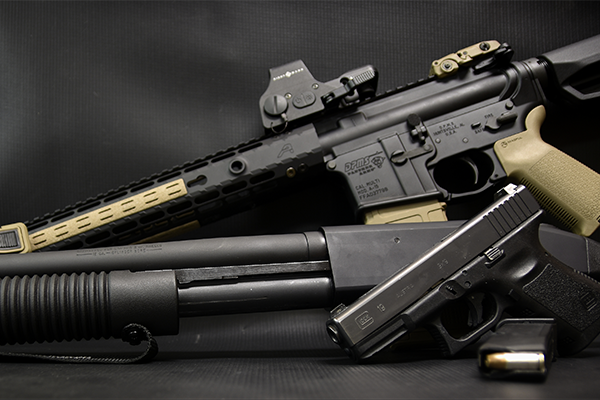
Last Updated on
By Vic Laboy
You’re enjoying a late-night movie with your spouse or resting on your day off when you’re startled by the sound of glass shattering. After investigating, you discover a home invasion is in progress and you must defend yourself against an attacker. What is your go-to gun for home defense? Do you retrieve your Ruger AR556 or Mossberg 500 from the safe, or the Glock 19 from the nightstand? What is your predetermined course of action to successfully defend your home? These are questions you must ask yourself in preparation to effectively defend yourself and the ones you love.
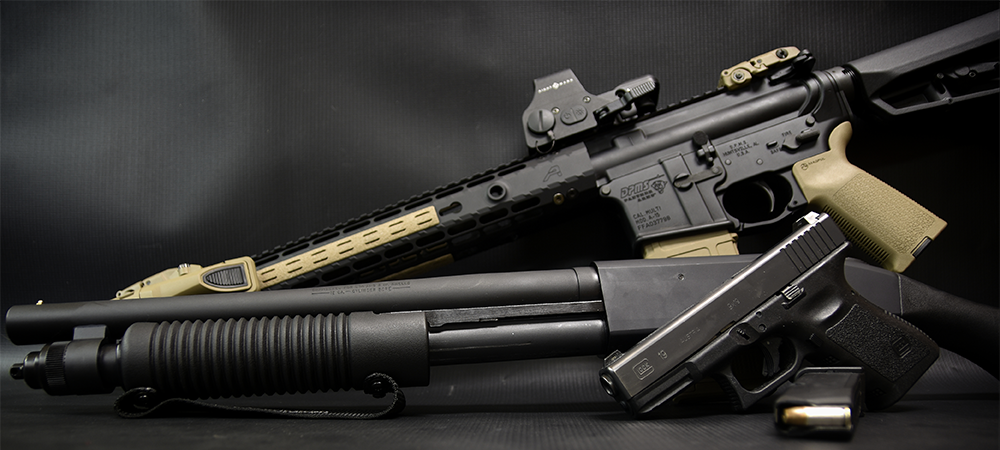
Break down
It’s often heard that shotguns are the ideal guns for home defense platform due to their simplicity. However, some may prefer a pistol or rifle. There are no right or wrong answers. It is simply personal preference. Ideally, your defensive tactics should consist of proper planning, escape routes, extracting family members, etc. In the heat of the moment, you should not spend crucial minutes determining what to grab. There are pros and cons to each platform, and we’ll discuss each to better assist you in deciding your go-to defense weapon.
Pistol
In the past, pistols were not considered as ideal guns for home defense as shotguns; however, modern technology and wider availability for training have reversed this theory. There are many advantages and disadvantages to using a pistol and most discussed topics are outlined below.
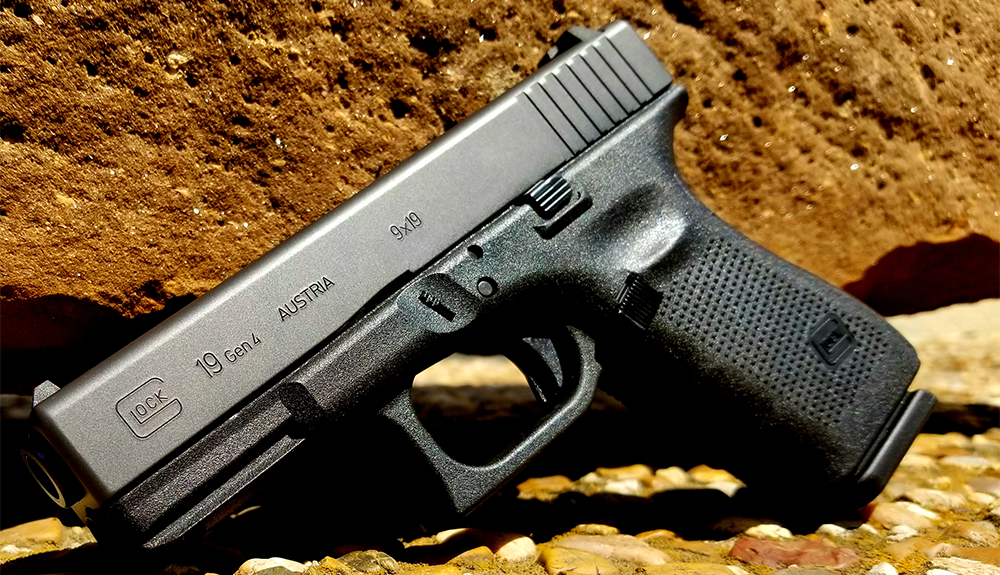
Pros
Concealability
Some may prefer to store their trusted handgun in the nightstand beside the bed for ease of access. You also retain the ability to carry in any area within your house at your leisure for quick access in case of emergency.
Operation
One-handed operation allows you to maintain readiness when opening a door or escorting family members to a safe area. With proper training, you may also switch hands if necessary, keeping you in the fight.
Handling
Because pistols are small, compact, and lightweight, you are not concerned with a barrel contacting corners, doorways, or other obstacles while room clearing. This allows you to tightly maneuver around corners and maintain a smaller profile when clearing.
Cons
Round Capacity
Depending on your preferred method, you may be limited to your 5-shot Smith and Wesson 642 up to a 17-round capacity in your Glock 17. If you are running a lower capacity handgun, your defense is limited especially if spare ammunition is not readily accessible.
Operation
While you may operate one-handed, you sacrifice accuracy and stability gained from using both hands. In a defensive scenario, you are not guaranteed to land every round on target. Those with smaller capacity platforms, like the 5-shot 642 may miss three out of five shots. The haunting truth of this is those two rounds may not effectively stop the threat, especially if there are multiple assailants.
Overpenetration
A commonly found issue amongst beginners or those without proper knowledge on the negative effects is setting up your home defense with ball/range ammunition or FMJ’s. As stated above, missed shots are not uncommon, especially when SHTF. Companies engineer rounds specifically targeted towards defense and different applications while FMJ’s are solely for training purposes.
You should only use hollow points in your carry/defense weapon to minimize the risk of overpenetration. It is important to understand the rules of basic firearm safety and know your target and what lies beyond. If a round misses the threat and strikes a passerby or embeds in a vehicle, you can be held legally liable for collateral damages.
Rifle
Next we move up the ranks to the rifle, specifically the AR-15. Like the pistol, the AR is not commonly thought of as a gun for home defense. However, this can be just as effective if not more when in the hands of a properly trained individual. The ability to mount attachments and overall modularity potentially make this a more ideal gun for home defense.
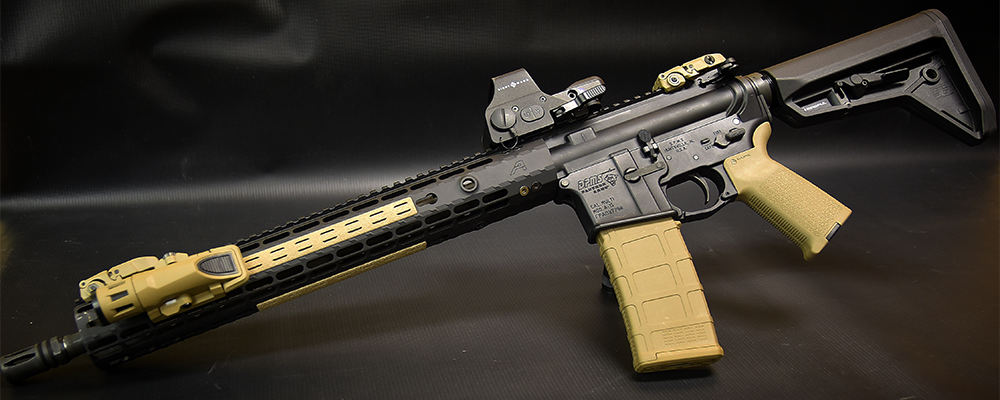
Pros
Operation
One reason tactical units operate with M4/AR15 style configurations is their ability to maneuver around corners and barricades with ease. An adjustable stock allows you to manipulate your length of pull and adjust the overall stature of the weapon when clearing rooms. Basing from personal experience, room clearing with a longer platform is extremely difficult and rather ineffective compared to compact setups.
Round Capacity
A standard capacity magazine houses 30 rounds excluding one in the chamber. For a total of 31 rounds, the chances of running dry are slim to none unless you are presented with a small militia in your living room. An additional option is the ability to attach a magazine coupler which allows you to house two magazines at a time. While the advantage is an increased round count, the negative side is added weight to the rifle. Even on a basic setup, like the Smith and Wesson M&P 15 Sport II with no other attachments, noticeable weight is added to the setup.
Modularity
The design of the AR-15 is one of the most modular setups on today’s market. With the wide availability of attachments, you can fully customize virtually each component in and on the rifle to fit your application. You can swap out your stock trigger for a Geissele Super Dynamic 3-gun with a 3lb trigger weight, or even insert a heavier buffer for greater recoil mitigation.
Along with the internals, your externals are just as customizable. The standard commercial stock can be swapped with a MagPul CTR or swap your iron sights for a SIG Sauer Romeo5 Red Dot. Almost every physical aspect of the AR platform can be modified to your liking.
Cons
Modularity
This is both a blessing and a curse as some go overboard with their gear resulting in some very impractical setups. Just because you can, does not mean you should. This rule applies to ruling out attachments for your rifle builds. Placing a red dot and vertical or angled foregrip are examples of effective setups; however, avoid the transition from “tactical” to “tacticool.”
Weight
In addition to the ability to overdo it with attachments, the overall weight of the platform can be significantly heavier if not properly geared for this type of application. In order to maintain efficiency with your rifle, a lightweight configuration is key to an effective build. With added weight, it may become extremely difficult to maneuver around walls or sweep smaller rooms.
Overpenetration
Both pistols and rifles use precision-based ammunition that are susceptible to overpenetration if not accurately placed on target. Missed shots may penetrate through drywall and enter separate rooms or even exit the house and strike an unintended target. Not only is it imperative to know your target and what lies beyond, but you must ensure you are capable of effectively stopping a threat without causing collateral damage.
Shotgun
Last but most certainly not least is the shotgun. Quite possibly the most commonly used gun for home defense, the shotgun has found itself in many homes as the go-to defense method. The widely recognized sound of the cocking mechanism is one that strikes fear; however, this should not be all you rely on as a deterrent.
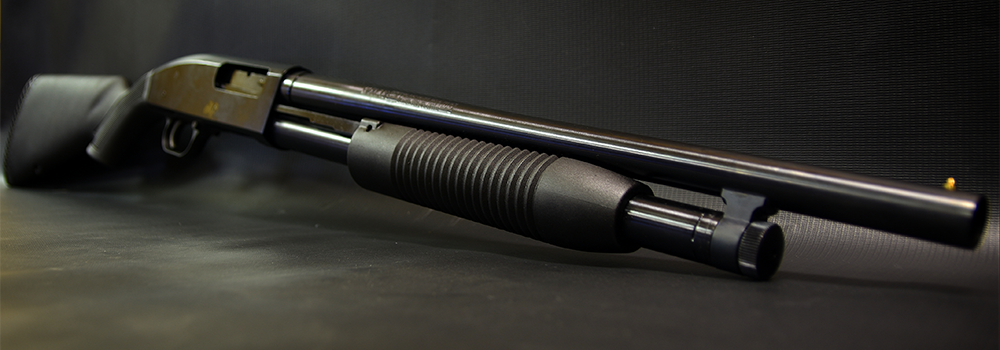
Pros
Operation
The simplistic design of the shotgun platform makes it the best gun for home defense for most individuals. This is ideal for those living alone or who look for a quick and effective means of protection. Many people in apartments also look to this as their preferred setup as, with the proper ammunition, they do not carry the same risks associated with pistols or rifles. One example to consider is the fact that shotguns do not use precision-based ammunition like their counterparts. Using more of a ‘spread’ style, this significantly reduces the risk of overpenetration. While this reduces the risk, it is not something to be overlooked as shots fired at closer distances remain susceptible to penetrating through drywall, doors, etc. Lastly, for added stability when operating, some models offer a pistol grip which can assist with recoil mitigation or simply allow you to shoulder the weapon in a more stable form.
Handling
When discussing a defense shotgun, we are not aiming towards a Benelli Super Black Eagle III, but rather a Remington 870 or Mossberg 500 with an 18.5 barrel. The shorter barrel paired with a full-length stock provide you with greater stability and maneuverability around corners. Basing on personal experience, it is not advisable to use your grandfathers 26” barrel from the latest hunt. Longer barrels are prone to snagging on corners, walls or other obstacles you might face. There are even a few models on the market, such as the Remington Tac-14, Mossberg 590 Shockwave, or even the Kel-Tec KSG that are small and compact configurations which may be considered ideal for defensive purposes.
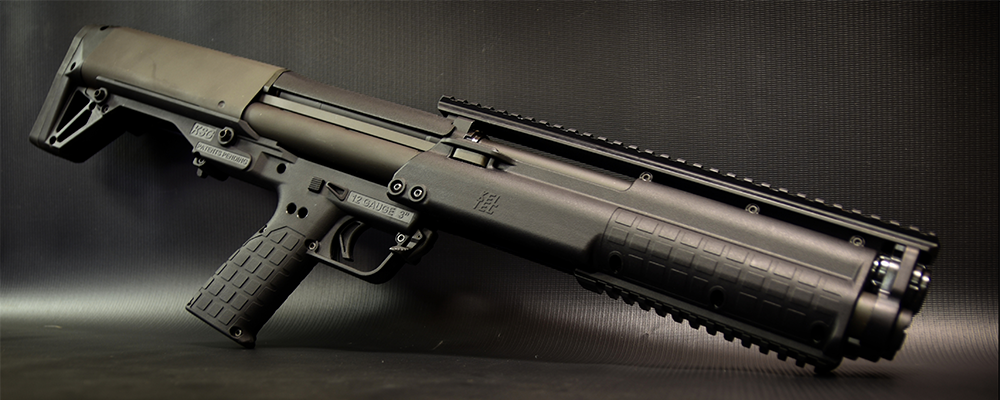
Ammo Type
As stated above, shotgun ammo is not precision for the most part. Aside from slugs, 000 buckshot or birdshot travels in a collective spread of small pellets. Because of this, there is not a need to aim for precision accuracy when engaging a threat. Granted, it is not ideal to fire blindly as it is important to follow one of the cardinal rules of firearm safety, which is know your target and what lies beyond. However, the chances of 3/4 of your shot striking the target are greater. Also, with this setup, you are given the option of retaining effectiveness with smaller gauges like .20 and .410 if you are not comfortable with the recoil of a .12GA.
Cons
Handling
We’ve all seen the videos circling the internet of inexperienced shooters firing a shotgun for the first time. The shooter fires in an unstable stance resulting in being knocked down from the recoil. This happens far too often with beginning shooters and, if this has happened to you, shotguns may not be your preferred method of defense. Imagine this, you’re faced with an attacker and must stop the threat. You move to fire and are immediately knocked to the floor by the recoil. Not only are you in a vulnerable position, but you have now disarmed yourself and given the attacker the advantage, a situation no one wants to be in. To avoid this, select an option you have confidence in, especially in stressful situations.
Round Capacity
Unlike pistols or the AR platform, shotguns typically only house a 4+1 capacity on average, some even lower than this. In the unlikely instance you experience a scenario which requires a larger round capacity, five rounds may not be enough to accomplish the mission. Those who prefer a greater round count may be deterred from this method of defense.
Ammo Type
As with anything we do, proper equipment is crucial to avoid potential issues down the line. This holds true with your ammo type as well. Most do not consider the after effects of using improper ammunition until instructed otherwise. One of the most recommended loads is 000 Buckshot. A 1oz slug fired in a common household is bound to penetrate through numerous obstacles before landing in an undesired location. Once again, this is where knowing your target and what lies beyond plays a critical factor. Slugs and other types of ammunition aside from defense are meant for either hunting or range purposes and should be used as such.
Final Thoughts
It is important to note the topics and examples provided in this writing may not directly reflect your opinions or preferences. Each loadout is geared towards the shooter and is crafted to your liking. Find what you are most efficient with and select something that performs for you. Just because the person next you prefers a different gun for home defense does not mean yours is wrong. Take your time and conduct personal research to choose the right fit. Once you have made your decision, visit us online at gritrsports.com, or in our retail store in Arlington, Texas. As always, train hard, train smart, and stay safe.




Leave a Reply